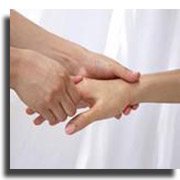
Types of Ayurveda Diseases
Samanyaj Vyadhi
The constitution of a human body includes both the physical and psychological constitution and the three doshas mainly works on these factors which when there is an imbalance results in illness. A balanced constitution is ideal and extremely rare in which the balanced state of all the three doshas neutralizes the bad or unwanted qualities, support and bring out good qualities of the other. Thus Samanyaj vyadhi arises when there is an imbalance of one or all the Doshas.Like anemia arises as a result of disequilibrium of either of Vata, Pitta or Kapha Dosha or all of them.
Nanatmaj
Nanatmaj diseases dominates as result of imbalance in any one particular dosha and some of the most common nanatmaj diseases include grudhrasi (sciatica), Kamala (jaundice),Medorog (obesity) which arises due to the debase of Vata, Pitta, Kapha Doshas, respectively.
Agantuj
The Agantuj diseases are mainly due to the entry of foreign particles into our body. So it is mainly an external factor causing diseases like poison, accidents, heat stroke etc.
Nijroga
Nijroga type of vyadhi mainly occurs when there is an imbalance or disharmony of all the three doshas namely vatta,pitta and kapha.
Manas
This is mainly due to the repairment of the functioning of the nervous system .Thus manas vyadhi mainly arises as a matter of interfernce of the doshas with the nervous system.
Sadhya
Sadhya generally refers to curable diseases. The diseases coming under Sadhya is classified into two categories, where those diseases that can be easily cured in a short period of time is referred as Sukhasadhya and those chronic illness which takes time to be treated are known as Kruchchhasadhya.Sukhasadhya vyadhi usually has few causes, mild pro-dormal symptoms, mild characteristic features and no complications.Kruchchhasadhya has lot of incurable symptoms which at times might need surgical and other methods of treatment.
Asadhya
Any incurable diseases is generally referred as Asadhya,in ayurveda.Asadhya is further divided into branches namely Yapya and Anukarma where for the former though there are remedies it persist for remaining period of life. At the time if treatment or medication one can see relief but however it shoots up again in short period.Anukarma are those that cannot be cured and shows symptoms like giddiness, delusion, restlessness, and appearance of fatal signs and loss of function of sense organs.
Aadi - Bala Pravritta
Such kind of diseases are mainly transmitted through genes or genetically predisposed. It arises as a result of defect in the spermatozoon or the ovum of the respective parents.
Janma - Bala
The congenital diseases are known as janma-bala in Ayurveda.It is a defect or an inborn error of metabolism that is present at birth.
Sanghata-bala
If the disease is traumatic, then it is referred to as sanghata-bala in Ayurveda.
Kala - Bala
Any diseases arising due to seasonal changes is known as Kala-Bala.The external and internal factors are responsible for the state of equilibrium of an individual's body. Our body always tries to fight against the changing environmental conditions. Only when a person is at an optimum level of his health he can enjoy a diseases free life. Once the balance is disturbed and leads to disease and disharmony.
Daiva - Bala
Sometimes also occur due to possession of demons or gods. Such conditions are referred as Daiva -Bala.Ayurveda has a strong belief in such vyadhi.
Svabhava -Bala
All human body is susceptible to natural changes and when such changes occur there are possibilities of diseases coming up which is known as svabhava- bala in Ayurveda.
Nija
The disorder of the three doshas namely vatta, pitta and kapha resulting in endogenous diseases are known as nija.
Agantuja
Any diseases which arises due to an external factor like an injury is said to cause Agantuja according to ayurveda.
Sharirik
When a person is affected by a disease then at times certain physiological disturbances may be seen and in such cases the diseases is referred as Sharirik.
Manasik
If a person shows sickness due to psychological disturbances then he/she is said to suffer from Mansik diseases in ayurveda.


